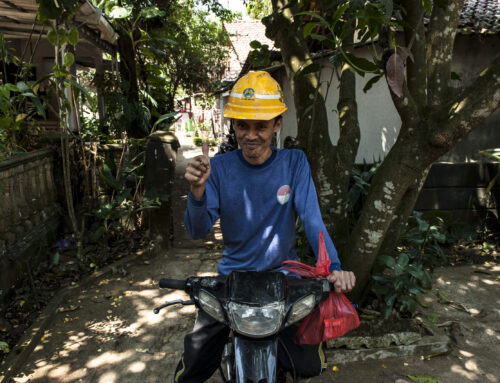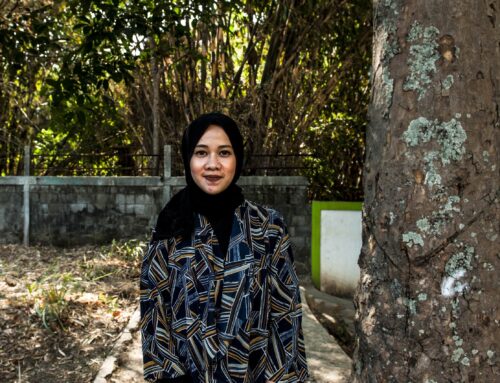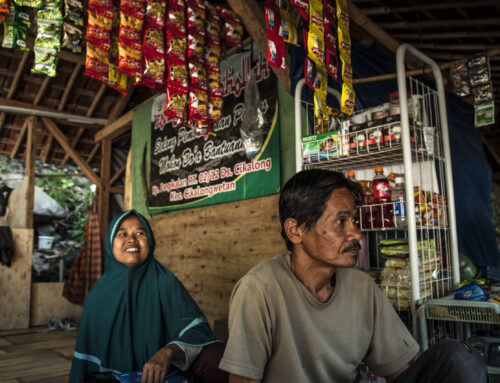Together, China and Indonesia make up about 22 percent of the whole world’s population. With China’s 2017 gross domestic product growth rate at 6.9% and Indonesia’s at 5.1%, they are also amongst top contributors to the world economy, as well as the world’s biggest climate polluters. China is currently the world’s largest emitter, and Indonesia is the fifth. Meanwhile, their active participations in international forums, regional as well as multilateral, such as Asia Pacific Economic Cooperation (APEC), East Asia Summit and G20 summit were the manifestation of both countries eagerness to strengthen regional and multilateral cooperation.
China and Indonesia Dilemma
by Sigit Karyadi Budiono, Research and Campaign Officer, KruHa
Photo by Xiaojun Wang
The Belt and Road Initiative (BRI) was launched by China amid a global climate crisis and economic slowdown. China is communicating – with its new global diplomatic language – a vision of “new era of ecological civilization” under the Belt and Road Initiative (BRI). The Belt and Road Initiative, a global development strategy proposed by China, has, so far, involved infrastructure development and investment deals with 136 countries and 30 international institutions. Trillions of dollars are being put on the table, and, with more being promised, governments of the world, Indonesia included, are competing to get on board.
At the 2nd Belt and Road Summit in Beijing in April 2019, the Indonesian government offered China to be involved in about 30 projects, worth $91 billion USD. However, current projects funded by the Chinese in Indonesia are already stuck and stalled due to controversies ranging from land ownership issues to orangutan habitat destruction.
In 2016, Indonesia broke ground on the 142.3-kilometer railway, a landmark project for both China and Indonesia. Nevertheless, it was not until May 31, 2018, that Kereta Cepat Indonesia-China (KCIC), the project execution consortium, composed of four Indonesian companies and five Chinese companies, signed an order to officially commence the project on June 9, 2018. The Indonesian side holds a 60 percent stake in the consortium, while the Chinese companies own the remaining stake. The project plan was expected to be completed in 36 months. That suggests that the rail opening might be expected in 2020, well behind the initial schedule which envisaged the service starting in 2019.
Acquiring land has been one of the biggest obstacles in the Jakarta-Bandung high-speed rail project. Behind the construction delay are discrepancies between local governments and the central government in Indonesia related to land acquisition. Indonesian residents have a strong awareness of their ownership rights, and records of land ownership in the country are often outdated or inconsistent, making the land acquisition process exceptionally difficult. To make matters worse, speculation has pushed up land prices along the railway’s planned route.
Building a high speed railway in Indonesia, which is frequently struck by earthquakes and sometimes accompanying tsunami, and where soft soils necessitate the employment of special construction methods to avoid sinking the structure built on them, will be a test to China’s technology and Indonesia’s credibility, which is often lost in bad risk analysis.
Despite all the controversies yet to be addressed with the current Chinese-funded projects, in 2016, China overtook Japan, the United States, Singapore and South Korea, and became Indonesia’s largest trading partner. Still, Indonesia is not among the biggest beneficiaries of this gigantic investment program, although it was in Indonesia where the 21st-Century Maritime Silk Road, the earliest concept that later evolved into the ambitious Belt and Road Initiative, was first brought up by President Xi Jinping in 2013. President Joko Widodo wants more. During a bilateral meeting at the G20 Summit in Osaka on June 2019, President Joko Widodo made a request to his Chinese counterpart for a special fund within the Belt and Road Initiative.
In the context of the bilateral relationship between Indonesia and China, this Belt and Road initiative will play a vital role.
Together, China and Indonesia make up about 22 percent of the whole world’s population. With China’s 2017 gross domestic product growth rate at 6.9% and Indonesia’s at 5.1%, they are also amongst top contributors to the world economy, as well as the world’s biggest climate polluters. China is currently the world’s largest emitter, and Indonesia is the fifth. Meanwhile, their active participations in international forums, regional as well as multilateral, such as Asia Pacific Economic Cooperation (APEC), East Asia Summit and G20 summit were the manifestation of both countries eagerness to strengthen regional and multilateral cooperation.
The two countries’ large populations, strong economic growth, and high carbon emissions will make any bilateral deals between Indonesia and China a global concern.
Established in 2002, KRuHa (the People’s Coalition for The Rights to Water) works with 120 organizations across Indonesia to promote community‐based water resources management through water resources advocacy and strengthen public control and access to clean water.




